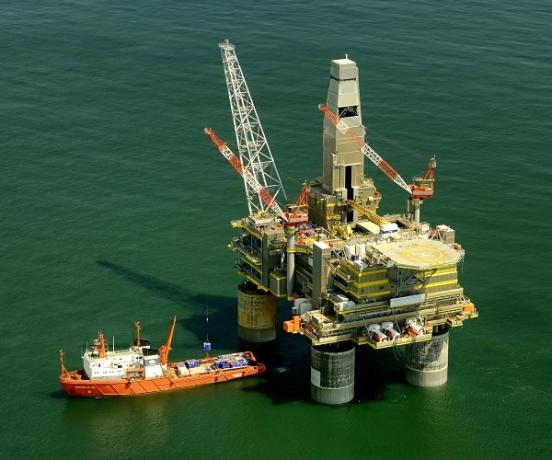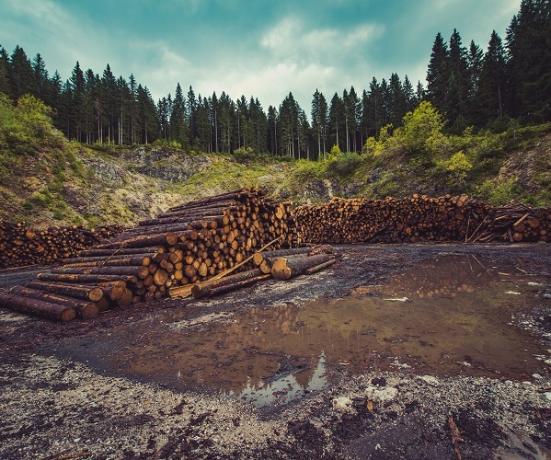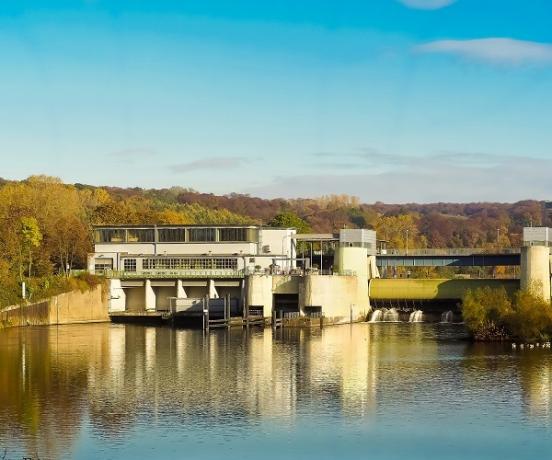The natural resources are the goods that come from nature and are used by man for several different purposes. Examples are: water, wind, sunlight, air, forests, vegetables, minerals, soil, among others.
The use of natural resources can be made both for economic exploitation and for the generation of other goods that will be used for the benefit of man, as in the case of natural resources that are transformed into energy or the use of Water.
Natural resources can be classified into two major groups: renewable and non-renewable. What defines them is the resource's capacity and speed of renewal. Thus, classification is done according to this requirement.
Renewable resources
Renewable resources are the goods that don't run out because they will always be produced by nature, that is, no matter how much they are used by man, they do not run out. Therefore, renewable resources are characterized by having a high recovery capacity.
Examples of renewable resources are: sunlight (solar energy), wind and air (wind energy) and the seas and rivers (hydroelectric energy).
 Wind energy (wind) and solar energy
Wind energy (wind) and solar energy
Potentially Renewable Resources
There are some features that belong to an intermediate classification called potentially renewable. These resources were classified this way because they have regeneration capacity, but their duration depends on the form and the amount that is extracted from nature.
Potable water
An example of a potentially renewable resource is drinking water. Water, in general, is an inexhaustible resource. However, only 3% of the existing water on Earth is drinkable and can be consumed by human beings.
Thus, drinking water deserves special attention with its use, as it may cease to exist if it is used indiscriminately and without control.
Drinking water reserves are replenished by rainfall, in approximately the same proportions, at any time in history. But questions like increase in world population and drinking water waste they may be the causes of a future lack of water suitable for human consumption.
Non-renewable resources
Non-renewable resources are those that may end or decrease a lot, if not used sparingly, conscientiously. Some examples are: water, vegetation, forests, minerals, precious stones, natural gas, nuclear energy and oil.
A non-renewable resource, once used, is not returned to its source in nature and has no maintenance capacity. It is precisely for this reason that these resources are called non-renewable, as they cease to exist as they are used.
Natural resources may not be renewable for two reasons:
- They can exist in nature in a certain amount.: some types of resources are in nature in a fixed number and cannot be replaced, neither by human action nor by nature. In these cases the reserves of these resources will inevitably run out one day, like natural gas, silver and gold.
- Regeneration time is too slow: in this situation, the natural resource can even be replaced (by man or by nature), but with the speed of regeneration is slow, they are very likely to run out if removed from nature in large quantities. For these resources not to cease to exist, they must be used as they are formed again in nature. The best example of this situation is drinking water.
 oil exploration platform
oil exploration platform
How to maintain non-renewable resources?
To prevent this type of resource from running out, its use must be done in a moderate and conscientious way. In addition, there are forms of conservation and replacement that apply to different types of nature's goods.
The ideal is that these resources that are taken from nature are renewed naturally or by man's action. Thus, both the withdrawal of resources and their renewal must be done in a planned and efficient manner.
In this way, resources will be continuously preserved, ensuring the continuity of these natural assets. For example: when deforestation of a certain forest area is carried out, new tree seedlings must be replaced and planted. The same must happen with plant species.
Some of these non-renewable resources, such as minerals, have regeneration capacity and are replaced only by nature. But the speed with which this happens is slow, as the creation of these resources happens through a natural process that takes its own time. So, so that they don't run out, they need to be removed from nature little by little and in small quantities.
Classification of natural resources
In addition to the classification into renewable and non-renewable resources, nature's assets are grouped according to their type. They are classified into four groups: biological, water, mineral and energetic.
Biological resources
Biological ones are plant resources, such as plants, soil, flowers and trees. These goods are used for many purposes, such as in the logging, agriculture, construction, medicine and food industries.
Also included in this group are animals, which are used mainly as a source of food and in agricultural activities. The consumption of meat and milk are examples of the use of animal biological resources.
All these resources make up the biodiversity of an ecosystem and their conservation ensures the balance and healthy preservation of ecosystems.
 Logging for commercialization
Logging for commercialization
Water resources
Water resources are the waters of seas, rivers, oceans and lakes. There are surface water resources, which are in the upper layers of the earth, and underground water resources, which are in deeper layers that are difficult to access.
This type of resource is used for human consumption and survival, being applied in domestic consumption, in the supplying industries and carrying out rural activities, such as the irrigation of plantations.
The power produced by the water is also used as a source of energy in hydroelectric plants, which use the power of water to generate energy that is supplied to cities, agricultural regions and industries.
 hydroelectric plant
hydroelectric plant
Mineral resources
The set of mineral resources is formed by precious stones, rocks and minerals. They are goods produced by nature, extracted by man for use as raw material for various products or as an energy source.
Some examples are: sand, clay, diamond, graphite, gold, silver, coal, among others. These resources are used in engineering, in the gemstone market, as a source of energy, in the healthcare products industry, among others.
The extraction of this type of resource must be done responsibly and planned, as its use indiscriminate can lead to scarcity of these goods, increased pollution of ecosystems and imbalances environmental issues.
 coal mining activity
coal mining activity
energy resources
Energy resources, on the other hand, are all natural goods that can be used as a source of energy, some being renewable and others non-renewable.
The sun, wind and water are examples of renewable resources used to produce energy. Oil and natural gas are also examples of energy sources, but these can be depleted as they are used.
There is also nuclear energy, which is produced from uranium. It is a very powerful form of energy that produces electricity through a process called nuclear fission.
 Nuclear power plant in operation
Nuclear power plant in operation
However, nuclear energy must be used with great care, as its power can represent a risk of accidents with serious consequences due to the destructive power of radioactivity.
Read more about Nuclear energy and social responsability.
See also the meanings of Natural resources and Mineral resources.
